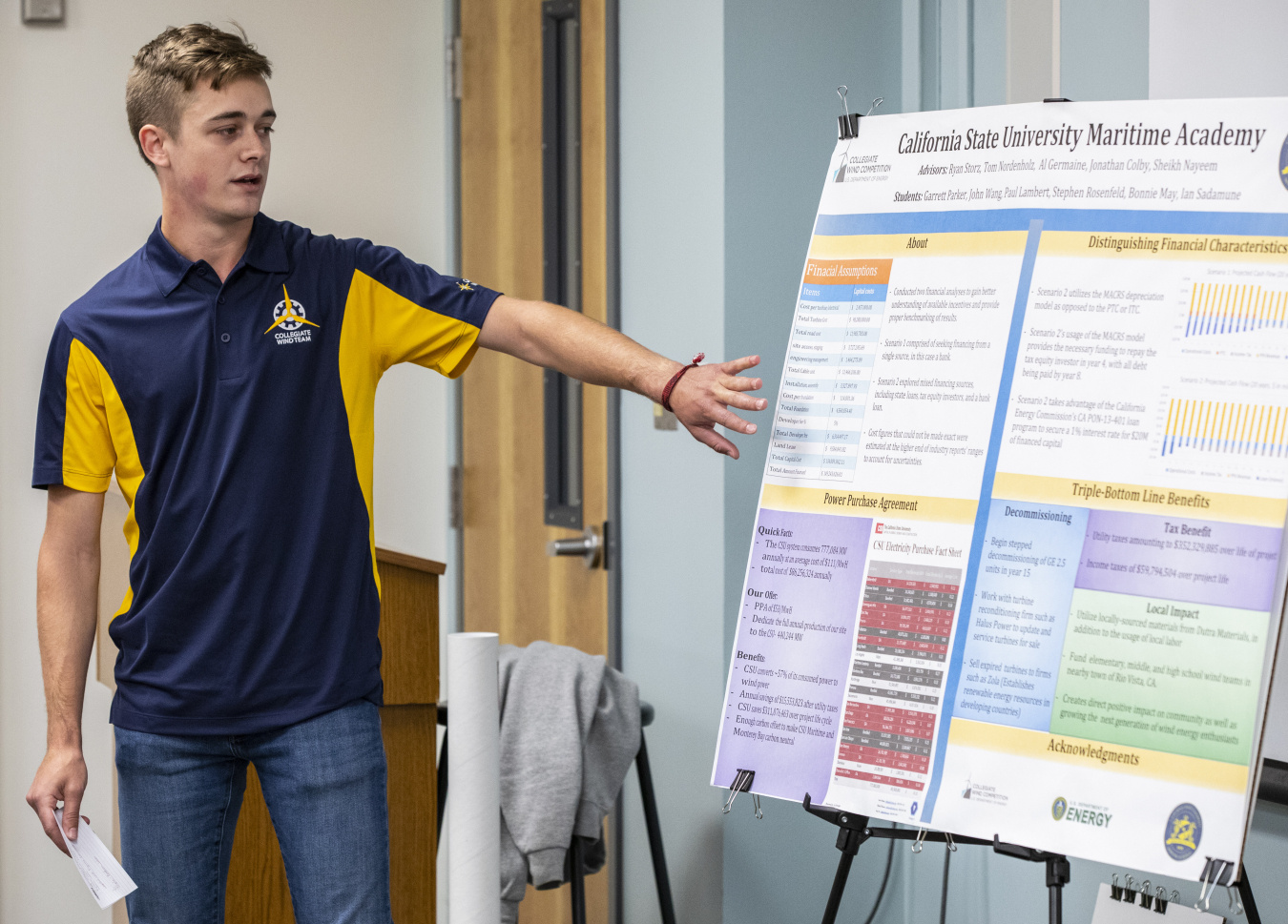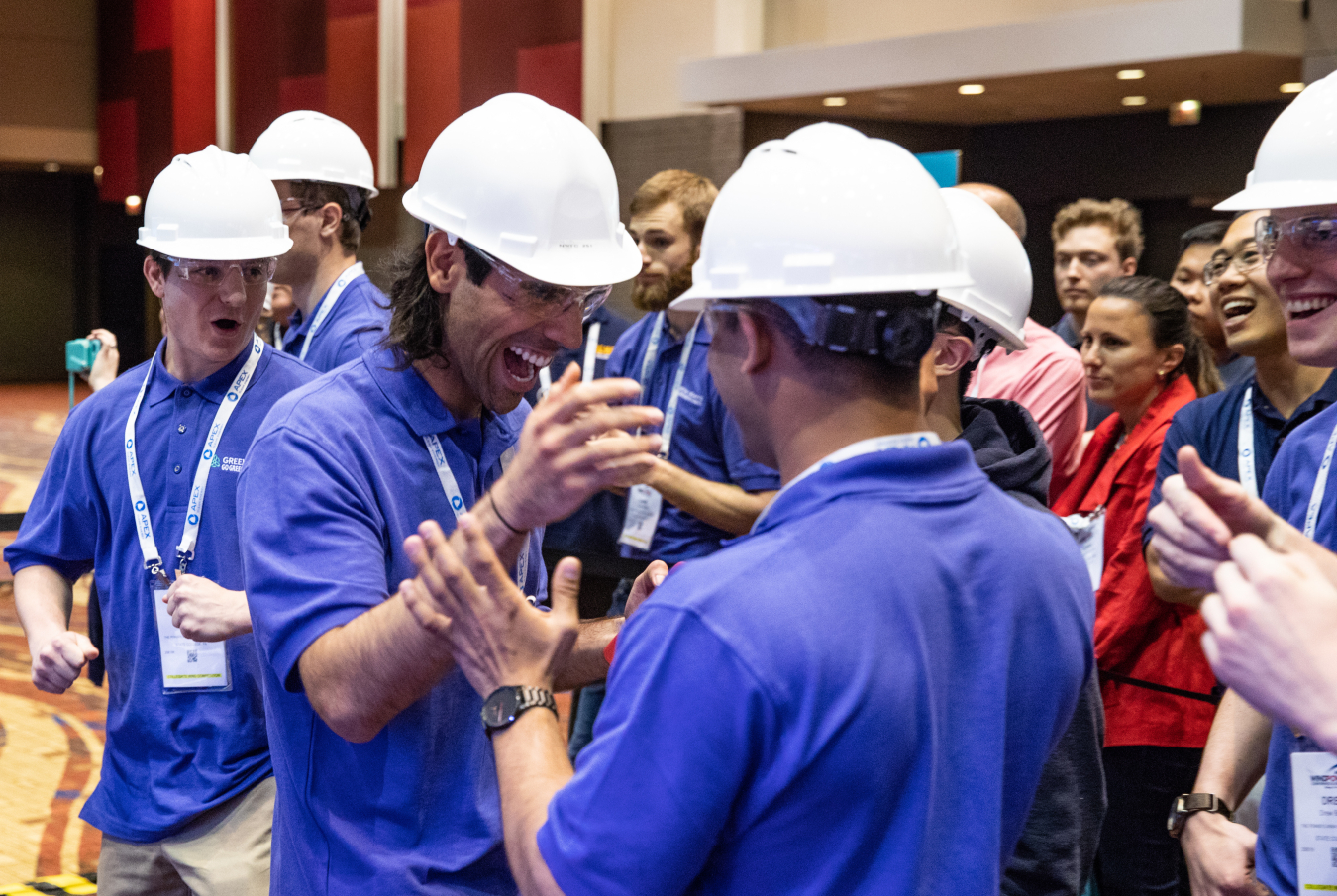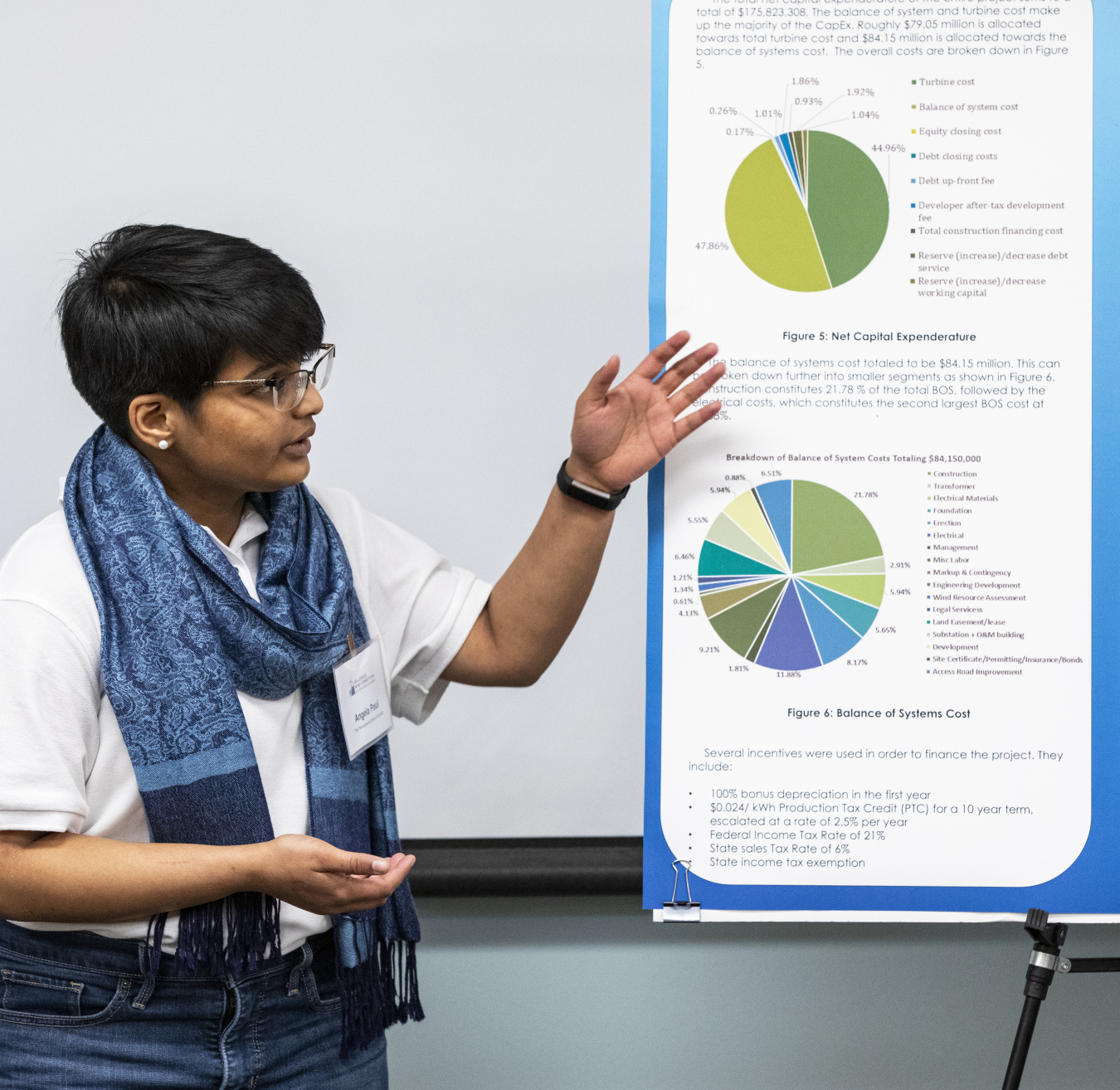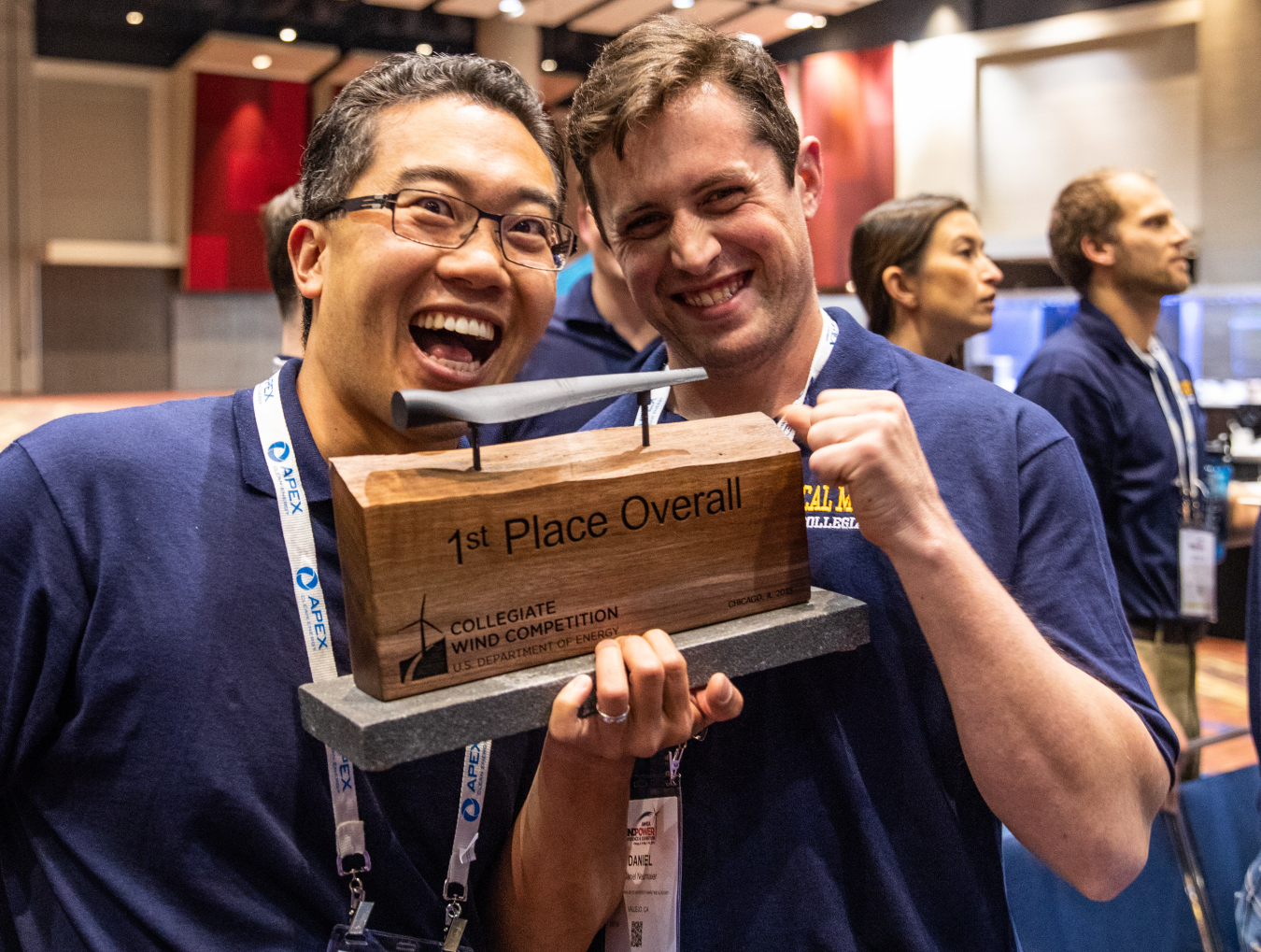To support growth in wind, the industry needs a broad range of workers, including turbine engineers, project developers, and supply chain managers.
February 24, 2020The wind industry needs a broad range of workers, including turbine engineers, project developers, and supply chain managers, to support growth in wind. Unfortunately, employers report difficulty hiring well-qualified candidates to support this growth while graduates have also had difficulty finding jobs.
That’s why the U.S. Department of Energy’s (DOE’s) Collegiate Wind Competition (CWC) organizing team called together a panel of competition alumni and wind industry professionals to provide helpful tips and tactics for breezing into a job in wind power.

The Collegiate Wind Competition is an opportunity to develop the skills and knowledge that will make an impression on potential employers.
Get involved
Perhaps the most important way to break into any new field of work, including wind energy, is to get involved with activities that will build the skills and experience you’ll need to be successful in the industry.
Garrett Parker was a senior at California State University Maritime Academy when he participated in the Collegiate Wind Competition in 2019. At the final judging for the siting competition, Parker struck up a conversation with Toby Butterfield, a senior project manager at leading wind plant operator EDP Renewables. Butterfield later recommended Parker to the hiring team at EDP Renewables. Parker has now worked as a project developer at EDP Renewables for 5 months.
“I came into CWC with pretty much zero energy experience,” said Parker. But the time he spent preparing for the competition equipped him with the knowledge he needed to make an impression on Butterfield and on EDP’s hiring team.
“I was just blown away by the amount that people learned in the course of working through their CWC projects,” recalled Butterfield. “Virtually everyone who came through that room had close to the level of experience I'd expect from someone who had been working within our company in a development role for 6 months to a year.”
Build relationships
Parker’s success story also highlights the importance of networking with others in the field. Butterfield recommends using social media to take a targeted approach.
“You can start getting a sense of places where you might like to work or the types of roles you might like to do,” Butterfield said, “And just reach out to people on LinkedIn that are in your area and say, ‘Can I take you out for coffee as an informational interview for 30 minutes, just to chat?”

Building strong relationships with others in the industry can open connections to more career opportunities.
That coffee date may help the job hunter develop a better sense of the type of work they want to do. Even better, it may lead to a job opportunity.
“By meeting these people and making these connections in a low-pressure way,” said Butterfield, “I guarantee you a lot of those conversations are going to end—if you know your stuff—with people saying, ‘Hey, I've heard of this role at this company’ or ‘Hey, my company has a role.’”

The wind industry has room for many different types of roles.
Be flexible
Nicole Mendoza, mechanical engineering researcher at DOE’s National Renewable Energy Laboratory, encouraged wind energy hopefuls to consider the many different contributions they can make to the wind industry.
“A company needs everything,” she said. “Everything from supply chain to project management to industrial manufacturing processes to the people to lay the fabric down on the blade to a variety of engineers.”
Butterfield advised job seekers to seize the opportunity to break into the industry rather than hold out for their dream job.
“A lot of people in our environmental group, for instance, have moved into that space from development,” he said. “Development and environmental affairs have a lot of overlap, so they said, ‘I'll get in development and I'm going to keep my eye open on the environmental affairs position, and when that comes open I'll try to make a switch.'”
Show your passion
Finally, the more your resume, cover letter, and interview talking points can show your passion and enthusiasm—not just for work, but for life—the more you’ll stand out from other applicants.
When National Renewable Energy Laboratory Mechanical Engineer Heidi Tinnesand was first looking for a job in the wind energy industry, she applied for a position as a wind and siting engineer at Vestas Wind Systems. When Tinnesand came in for her interview, the hiring team asked her about something she’d mentioned on her resume: her love of rock climbing. As it turned out, Vestas needed an engineer who could climb and repair instruments on 80-meter tall meteorological towers, and here was a candidate who climbed to great heights for fun. Tinnesand got the job and has now worked in the wind industry for over a decade.
“It's not always linear how you get into this industry,” she said, “But having enthusiasm and commitment to renewables really shone through when I got that opportunity to speak to somebody.”

Showing passion, enthusiasm, and commitment to renewable energy will make a powerful impression on hiring teams.

